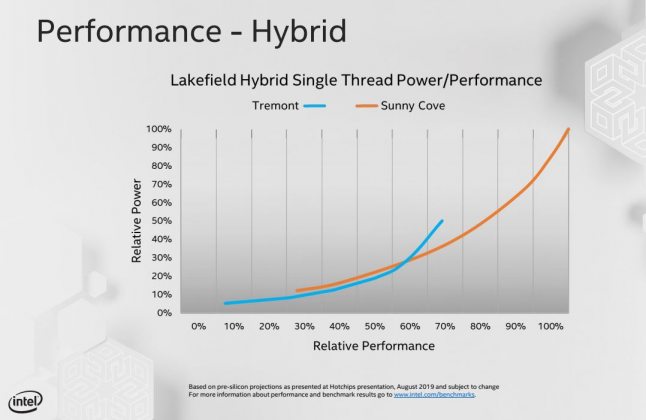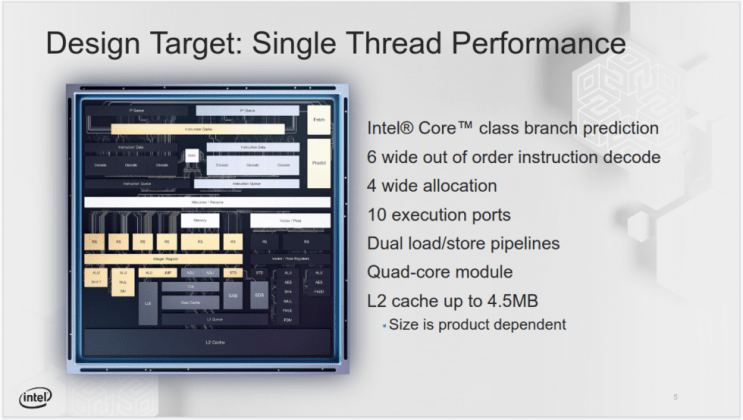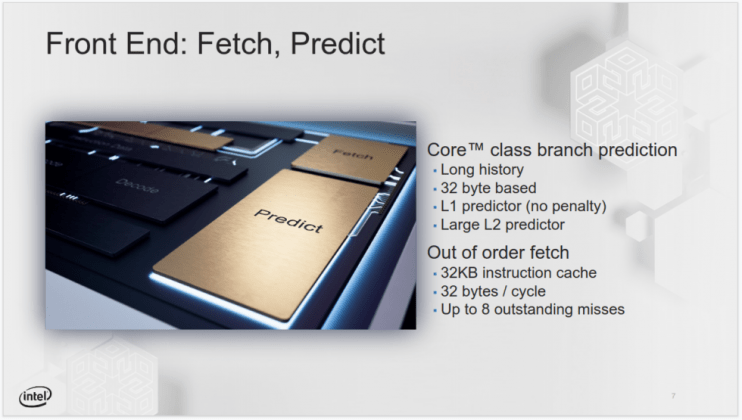To understand Tremont, it’s useful to know that the 10nm Lakefield will use a hybrid CPU architecture. It will house 4 Tremont cores with a single scalable Sunny Cove core and the Foveros 3D packaging technology. The technique could significantly alter the desirability of Intel when it comes to devices like tablets, phones, and IoT. The chipmaker is promising significant instructions per cycle (IPC) gains compared to its previous efforts. It also touts advancements in instruction set architecture (ISA), security, and power management.
“We focused on a range of modern, complex workloads while considering networking, client, browser and battery so that we could raise performance efficiently across the board,” said Stephen Robinson, Intel Tremont chief architect. “It is a world-class CPU architecture designed for enhanced processing power in compact, low-power packages.” in terms of specific specifications, Tremont 6-wide out-of-order instruction decode in a 2×3 clustered form factor. It has an L2 cache of up to 4.5MB, dual load/store pipelines, 10 execution ports, a 32kb instruction cache, and a 4 wide allocation. So, what does all this mean for the Surface Neo? Without benchmarks from the device, it’s impossible to note specifics. Theoretically, though, it should mean improved performance per watt in the Neo’s strange form factor. As for Lakefield itself, Intel is promising less standby power use, while maintaining admirable graphics and networking performance.









